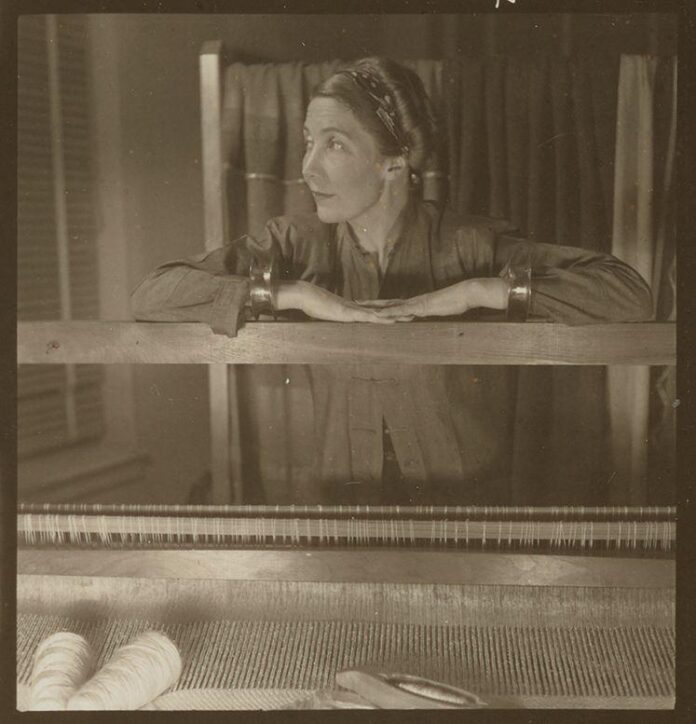Dorothy who? That is the question design insiders, along with museum-goers, may ask themselves when New York’s Cooper Hewitt, Smithsonian Design Museum opens the first monographic show in over 50 years on Dorothy Liebes (1897-1972), the influential textile designer and weaver. Liebes played a key role in mid-century Modern American interiors, but now even many experts in the field might have trouble placing her.
Liebes’s collaborators, such as Frank Lloyd Wright and Raymond Loewy, need no introduction. And Liebes herself was amply celebrated in her own lifetime. But the full scope of her three decades of A-list commissions—which stretched from New York’s United Nations building to the set of the 1949 Katharine Hepburn and Spencer Tracy comedy Adam’s Rib—disappeared into archives and museum collections following her death in 1972, when her studio closed down. A Dark, A Light, A Bright: the Designs of Dorothy Liebes uses nearly 200 objects, from code-like sample cards to extant pieces of glamorous furniture, to reinstall Liebes as one of the period’s creative geniuses.

Liebes’s Mexican Plaid textile, around 1938, combined natural fabics, such as wool and cotton, with synthetic ones, including cellophane. Photo: Matt Flynn © Smithsonian Institution
The curious title refers to Liebes’s motto for how to devise colour schemes, and the show manages to bring the black-and-white interior photographs of mid-century interiors back to life with preserved examples of Liebes’s palette.
Liebes had originally planned to be an artist, explains the exhibition’s co-curator Alexa Griffith Winton, and “her understanding of colour emerged from that”. The California native collaborated with fashion designers, as well as architects, and while a 1958 woven-leather sample card—in various shades of yellow—is a study for a leather pattern suitable for shoes and handbags, its striking grid shows an artist’s eye at work.

Liebes’s sample card for the Eagle Ottawa Leather Corp (1958) Photo: Matt Flynn © Smithsonian Institution
A challenge for mid-century Modern architects was what to do with all those glass windows. “You couldn’t have Victorian ruffles,” says Winton, and so Leibes leaped into the fray by helping to fashion “a new paradigm for window treatments”. The show will be rich in examples of Liebes’s textiles for shades and drapes. In 1950, just after Liebes relocated her studio from San Francisco to New York, she collaborated on Henry Dreyfuss’s now legendary redesign of the Persian Room, a nightclub in Manhattan’s Plaza Hotel. The show will include an expanse of luminous green fabric Liebes later devised for the space, which used synthetic Lurex yarn to suggest lights in the drapes.
Liebes was an early and persuasive advocate of incorporating synthetic materials into fine textiles, and the Cooper Hewitt is able to draw on its collection for a 10ft-long sample of a fabulously coloured material called Mexican Plaid. The 1938 twill may include traditional cotton, silk and wool—but gets a dose of 20th-century sparkle from cellophane.
• A Dark, A Light, A Bright: the Designs of Dorothy Liebes, Cooper Hewitt, Smithsonian Design Museum, New York, 7 July-4 February 2024

























